8 important skills to be an elementary school teacher
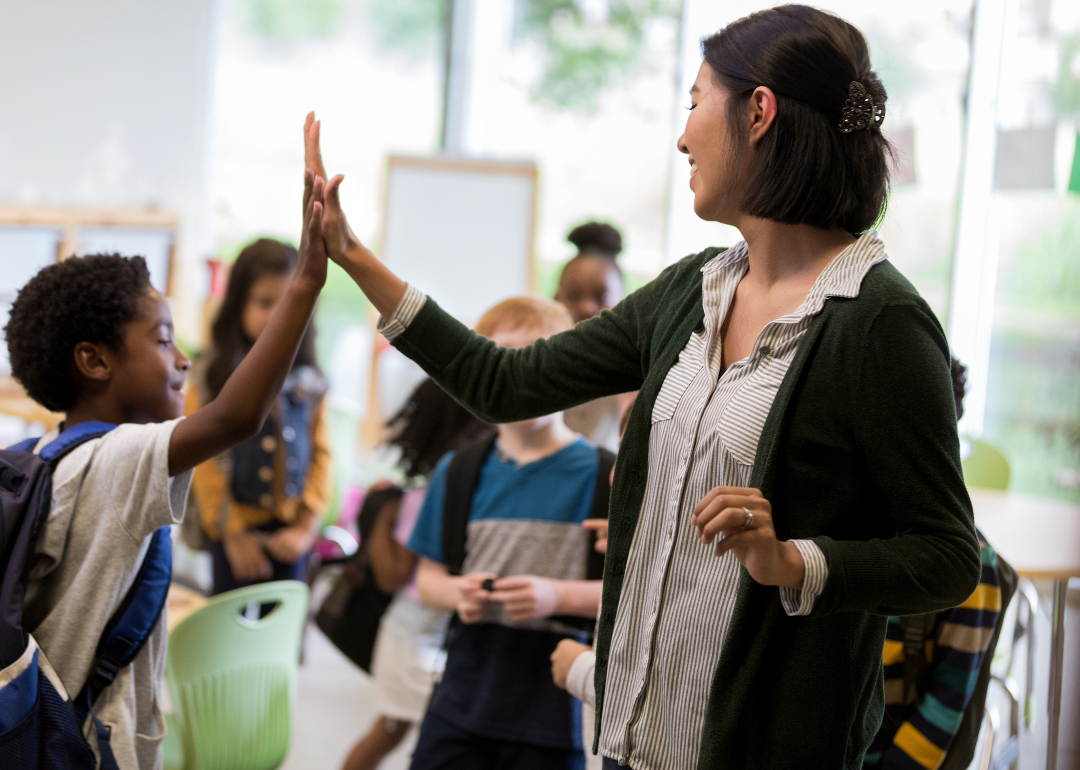
Canva
8 important skills to be an elementary school teacher
An elementary school teacher high fives a student.
Perhaps above all, a great elementary school teacher needs patience and compassion—but there are many other skills that are essential to teaching success. Some can be learned right away and some only developed over time. Study.com compiled the required skills and abilities needed to become an elementary school teacher according to the O*NET Resource Center, which compiled results from a survey of teachers, occupational experts, and occupational analysts.
Elementary school teachers play an important role in shaping how students learn and can have a lasting impact on students’ lives even beyond the classroom. Being an educator has always been a challenging vocation, but those obstacles have been compounded by teacher shortages and various educational restrictions resulting from the COVID-19 crisis. As educators and administrative staff experienced burnout throughout the pandemic, this led to many of them changing careers and exploring other industries.
Low salaries along with the long hours required, both in and out of the classroom, have also been significant factors in the drop in new teachers. A 2022 report from the American Association of Colleges for Teacher Education shows that in the early 1970s, close to 200,000 education degrees were awarded annually. In 2018-19, that number was less than 90,000, largely due to students obtaining degrees in other wide-ranging industries.
Elementary and middle school teachers must earn a bachelor’s degree in education and be certified by the state in which they chose to work. Requirements do vary by state; some require student teaching or field experience, and state-mandated skills assessment tests. Kindergarten and elementary school teachers help students with early learning concepts, oftentimes by using a hands-on approach to engage students and keep them curious and focused. These educators help students to understand problem-solving and how to develop critical thinking skills.
Read on to learn which eight skills are some of the most important for elementary school teachers to have.
![]()
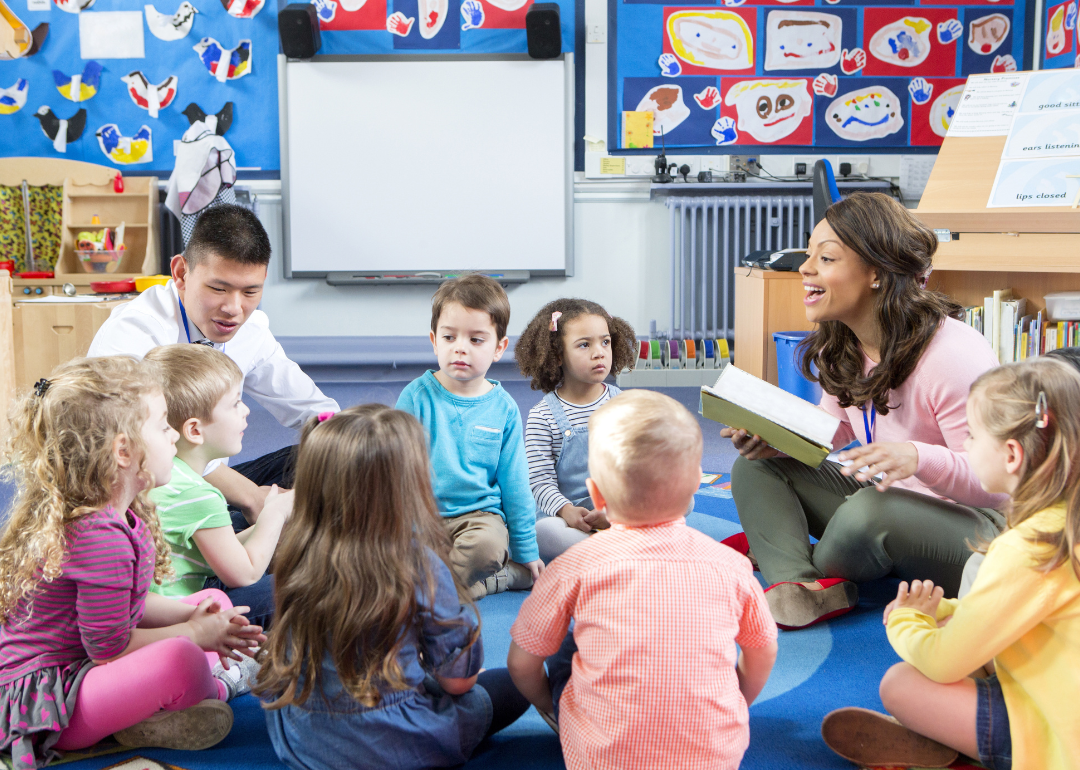
DGLimages // Shutterstock
Speaking
A group of students sitting on the floor with their teacher.
Teachers must be able to communicate accurate information effectively as they interface with a variety of people. One of the main ways educators communicate with students and their parents is through speaking with them, not at them.
When communicating with students in grades K-2 for example, it’s advised that teachers speak in a gentle, welcoming tone, use age-appropriate vocabulary, explain the meaning of new words, and articulate properly.
For students in these grades, this is a highly inquisitive stage where many questions are asked. It’s a great opportunity for educators to foster engagement and get creative.
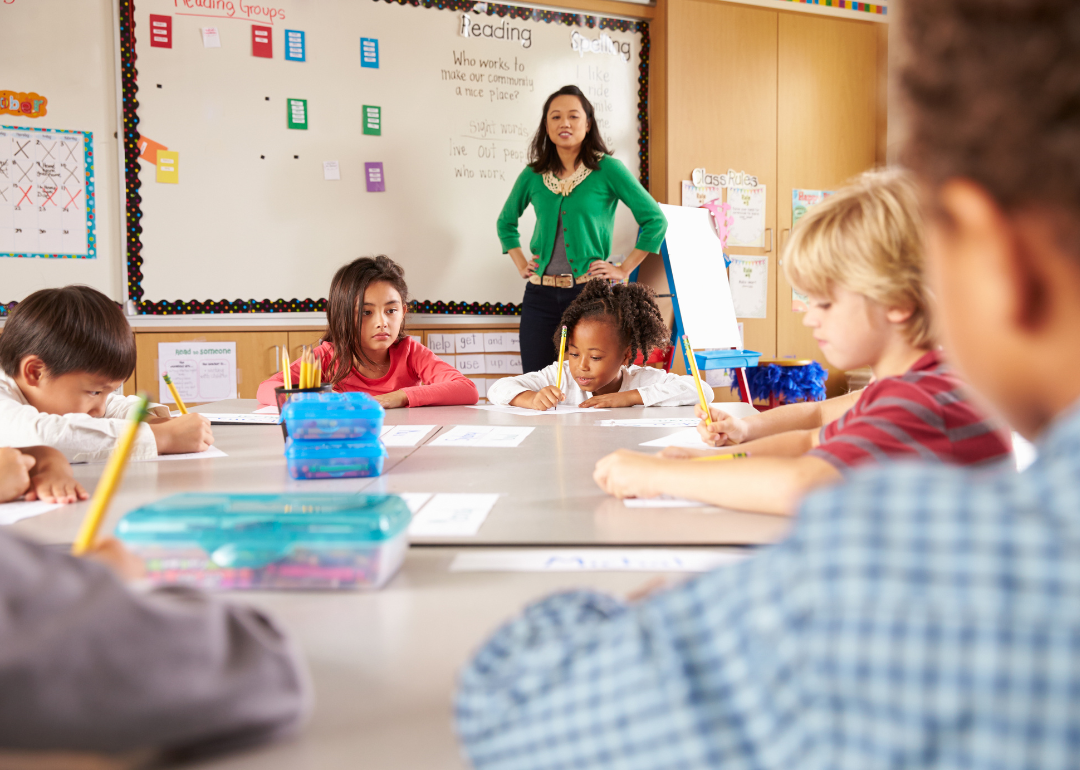
Canva
Instructing
A teacher instructing a class of elementary schoolers.
Teachers have a wide array of tasks throughout their work day and one of the main skills required is knowing how to instruct others. Instructing, or showing others how to do something, is no simple feat.
Whether instructing students individually or in groups, various teaching techniques are used such as lectures. For younger students, a more hands-on approach is often required, as individual attention and tactile methods that involve more student-teacher interaction benefit younger learners. Teachers should first identify and assess the educational needs of their students before developing their lesson plans.
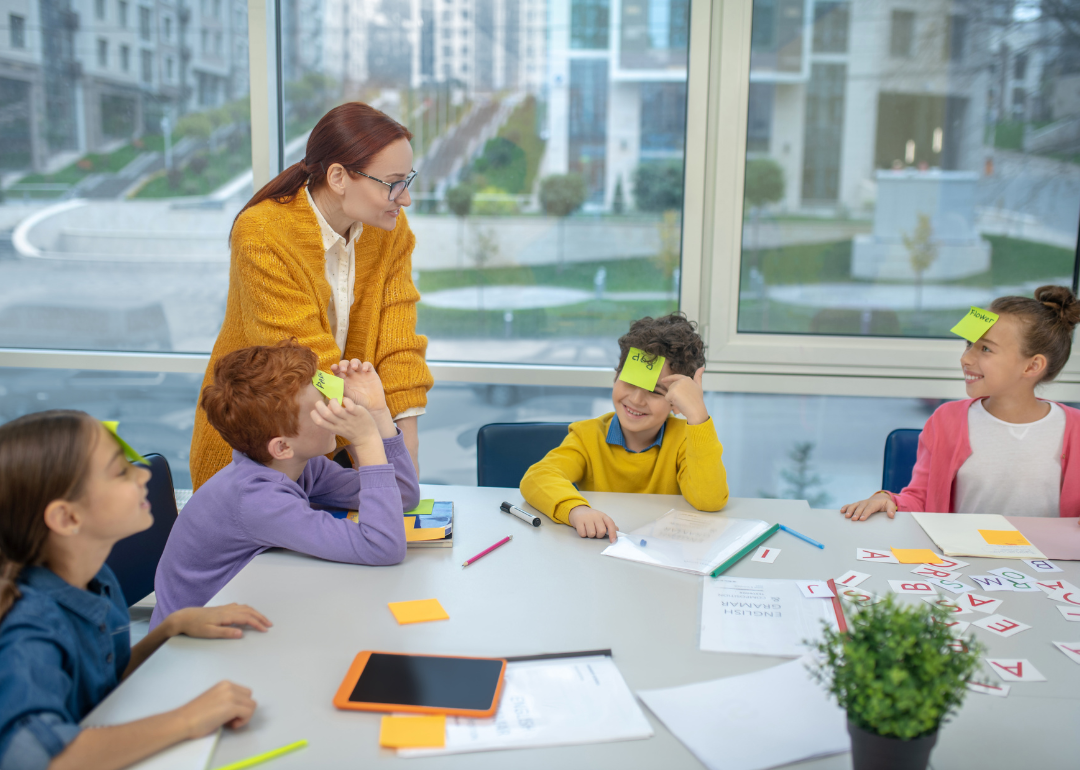
Dmytro Zinkevych // Shutterstock
Learning strategies
Students participating in a class activity.
Educators employ different teaching strategies and methods to help their students learn. Selecting and using different procedures for teaching new ideas, concepts, and subjects is beneficial in the classroom as each student learns at a different pace and with a different learning style.
Each learning style matters. Engagement tasks students with being involved in various class activities and gaining concentration skills in the face of distraction. Learning through problem-solving uses flexible strategies for handling challenging situations and teaches students how to self-regulate their behavior.
It’s important for educators to practice various learning styles to meet the needs of their students and to reflect their diverse teaching capabilities.

Serhii Yevdokymov // Shutterstock
Reading comprehension
A teacher drinking coffee and reading a document.
The teaching profession requires solid and effective communication skills, but also reading comprehension, both as a possessed and teachable skill. Educators must teach early elementary vocabulary in the classroom, but in their own work must be able to process and synthesize instructions, handbooks, and other work-related documents that may include highly technical language and policies.
Removing distractions such as mobile phone notifications or other visual and aural stimuli can help an educator better focus on their reading development. When reading more detailed and technical documents, instead of reading in one sitting, it may help to read a paragraph or so at a time to make sure you understand what you’re reading before continuing on to the next part of the article. Building in enough time to read complex documents at a slower pace is also key.
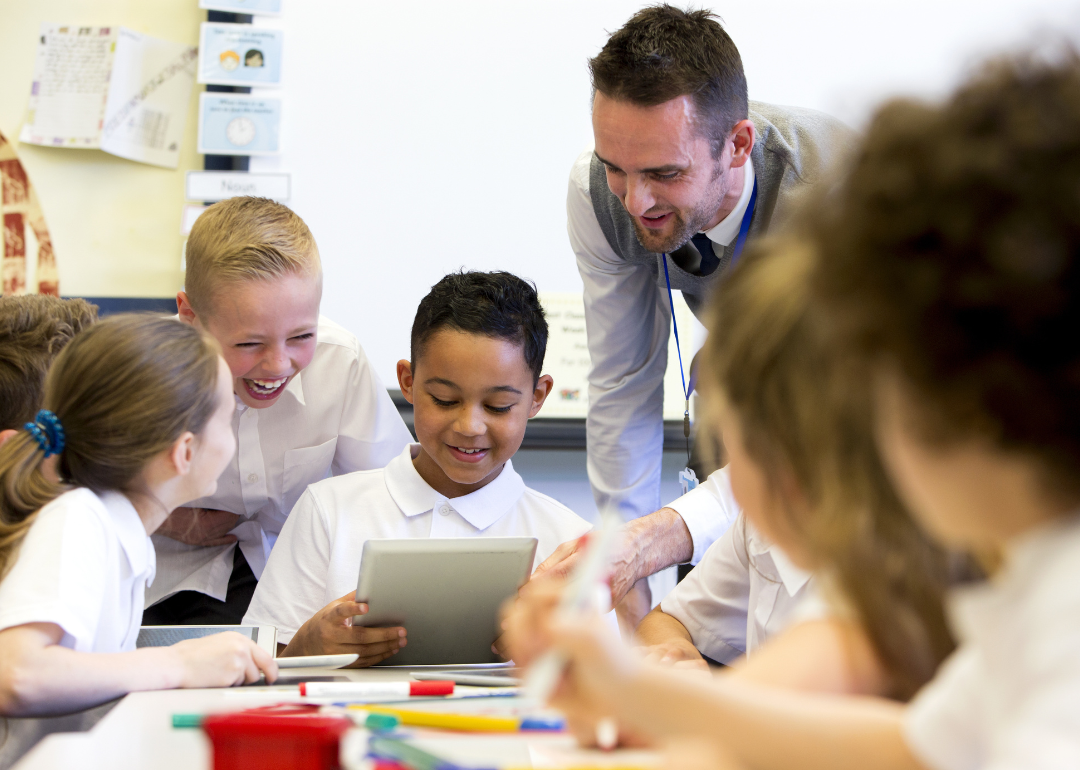
DGLimages // Shutterstock
Active listening
A teacher listening to a group of children.
Active listening is a method where the listener focuses on what the speaker is saying—too often people are not actually hearing someone’s point of view but instead just waiting to present more rebuttals to support their own argument. Also referred to as deep listening, this method can involve responses whereby the listener paraphrases back to the speaker what was said, a technique that improves mutual understanding and reinforces to the speaker that they have been heard.
This type of conversation is generally associated with counseling and conflict resolution but can be applied in educational situations as well. In a classroom setting, active listening is less focused on resolving conflict than encouraging learning.
Active listening is not only helpful for teachers and students. This concept is also beneficial when teachers are communicating with parents as it helps to gain more insight into the parents’ perspective and demonstrate to parents their voices and views are being taken into account.
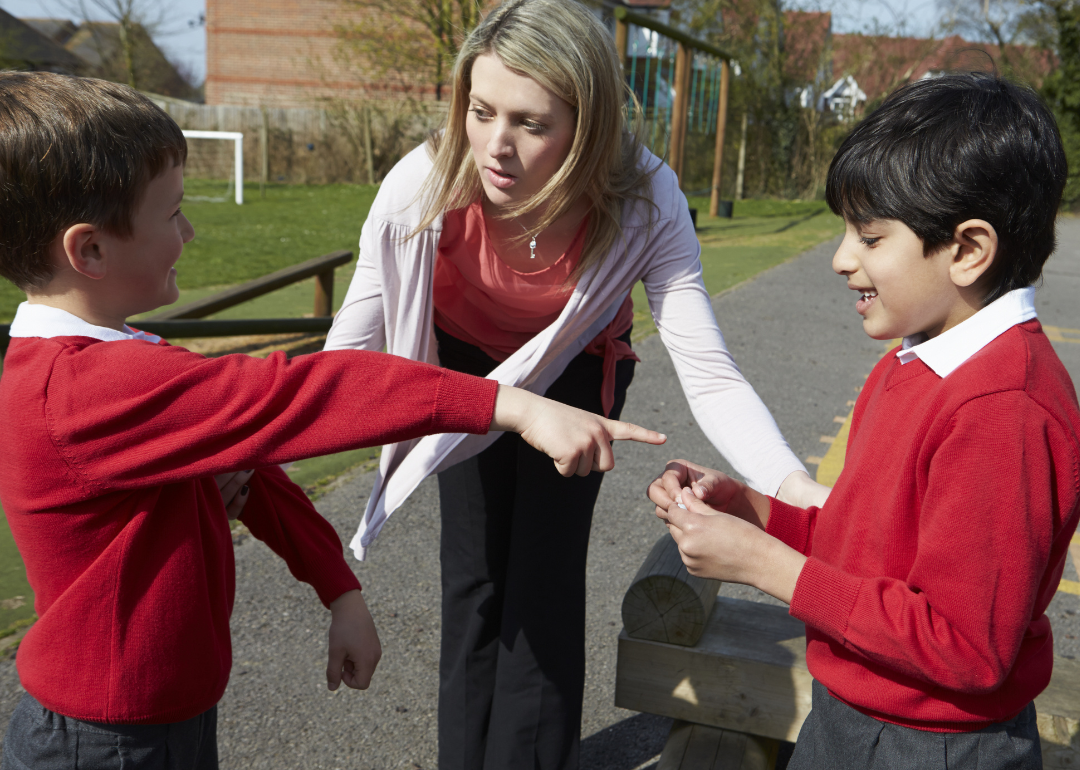
Monkey Business Images // Shutterstock
Critical thinking
A teacher stopping two boys from fighting.
Teachers have a ton of responsibilities and must be capable of using logic and reasoning to come up with solutions. Whether it’s answering questions from students on the spot, handling conflict between students, or evaluating daily activities while considering long-term teaching goals, educators are required to practice critical thinking.
Teachers don’t always have control over the educational materials or standards used in their classrooms—textbooks, learning standards, and evaluations are determined by the school district—so the ability to navigate these requirements while also creating a conducive classroom atmosphere for all students is an essential acquired skill.
Critical thinking is important especially when it comes to curriculum development. The educator’s approach to teaching, the strategies used, and how they accommodate students with different learning styles and capabilities are what’s critical to ensure learning success.
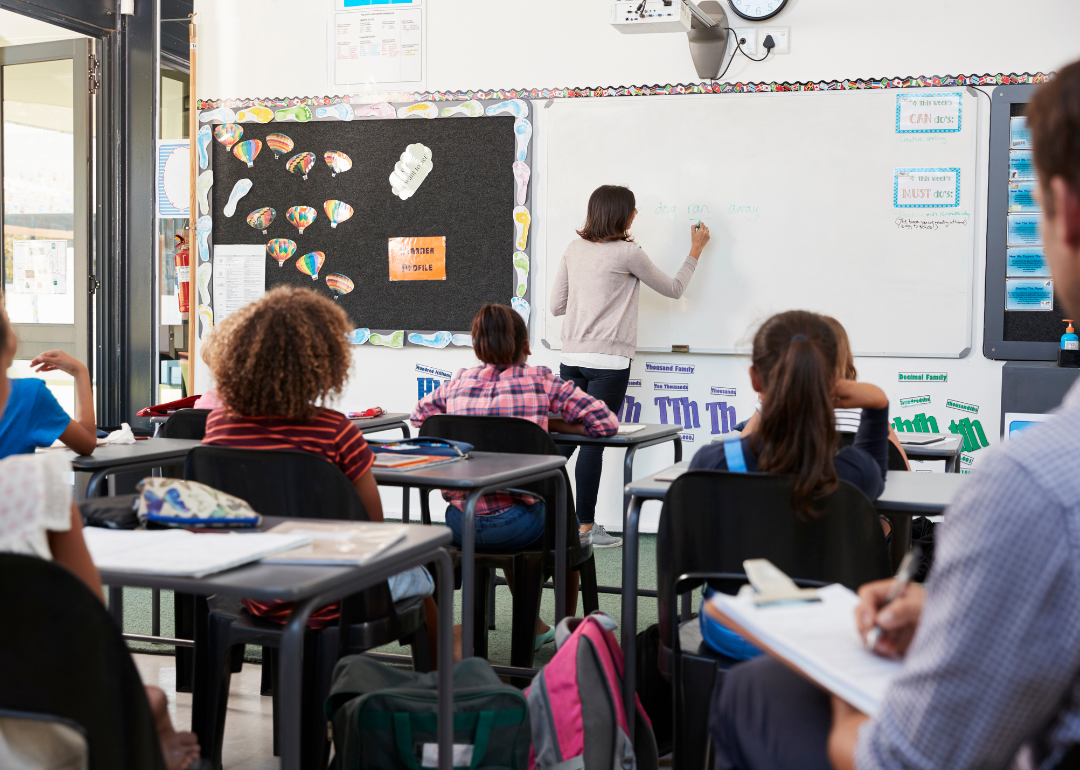
Canva
Writing
A teacher writing on a white board.
Teachers are held accountable for knowing how to communicate—and not merely how to correct grammar. Whether it’s writing emails and newsletters to parents or other teaching staff or engaging in academic writing for educational or professional development purposes, a teacher’s writing ability must involve contextualizing ideas as well as defining and explaining concepts.
Within the classroom, a firm understanding of grammar, spelling, punctuation, tone, and context is required to help students develop their own writing skills as a primary means of communication. Writing is also a prime function of long-term memory development, and so honing one’s writing skills continues to aid the teacher as much as the student.
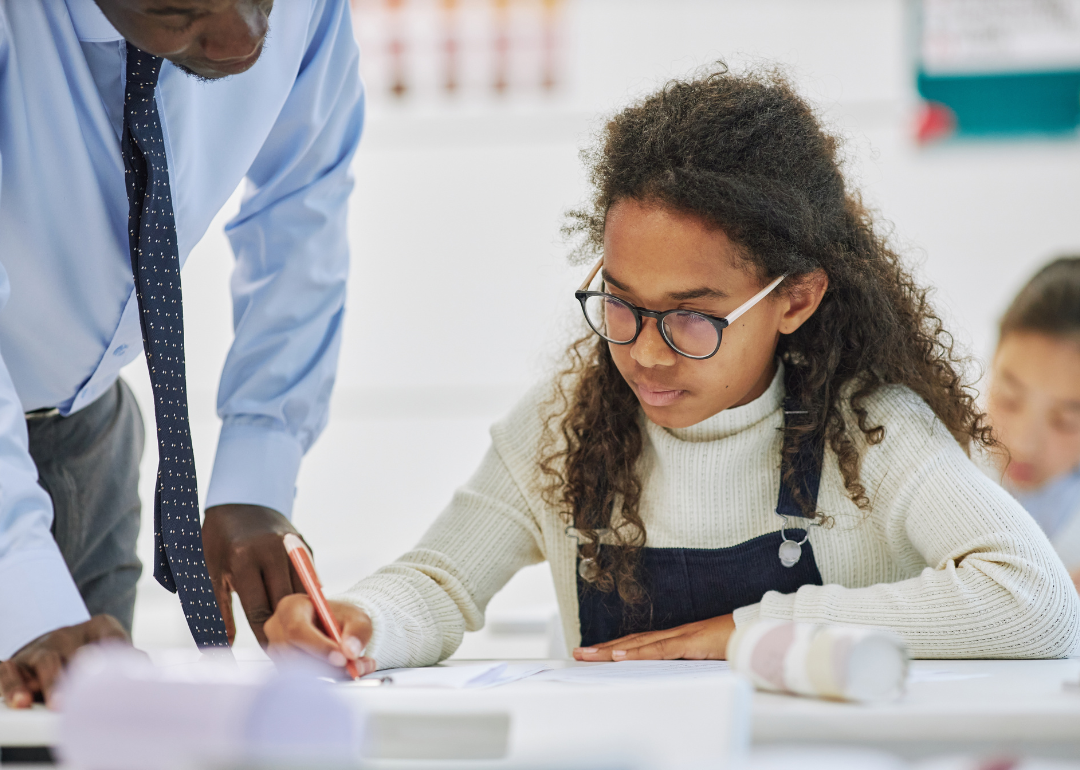
SeventyFour // Shutterstock
Monitoring and assessing
A teacher helping with a student assessment
It may seem simple to just keep an eye on how students are doing, but there’s an art and a technique to monitoring or assessing learning progression. A good teacher will want to help their students reach their full potential. Teachers can assess students through observation and interaction, curriculum-based testing where they test students on all material covered throughout the year, consistent evaluations, and even formative assessments.
Outside of the assessments formally prescribed within the curriculum, teachers should develop their own modes and methods of assessment. At the elementary level, fun activities such as a 3-2-1 activity, having students “teach” a subject to one another, and turning study reviews into a game show are examples of approaches that can engage all students.
This story originally appeared on Study.com and was produced and
distributed in partnership with Stacker Studio.





